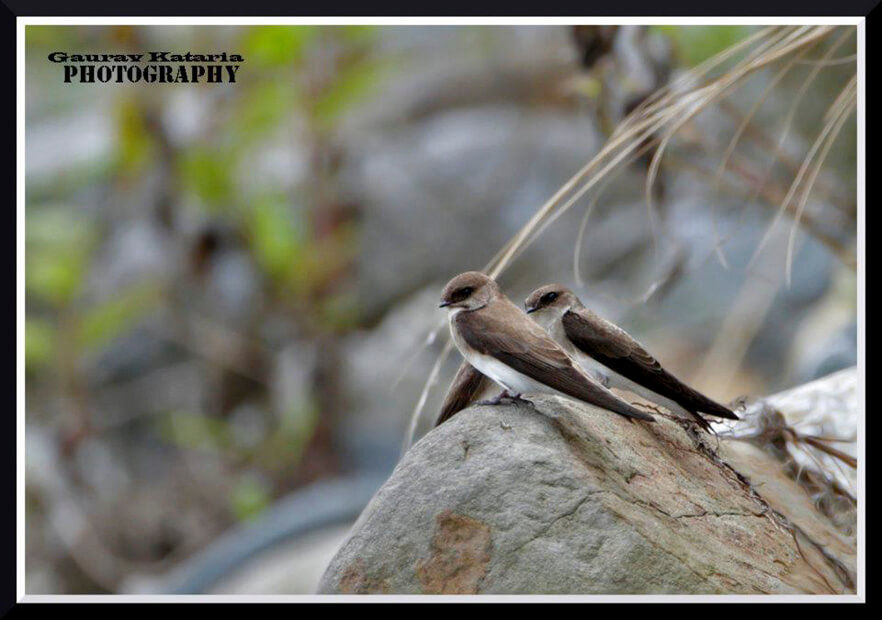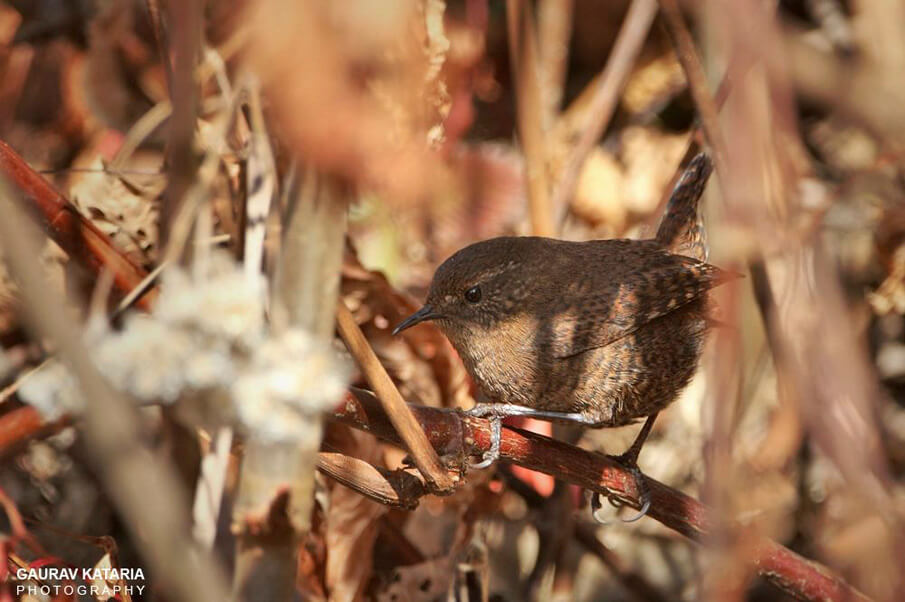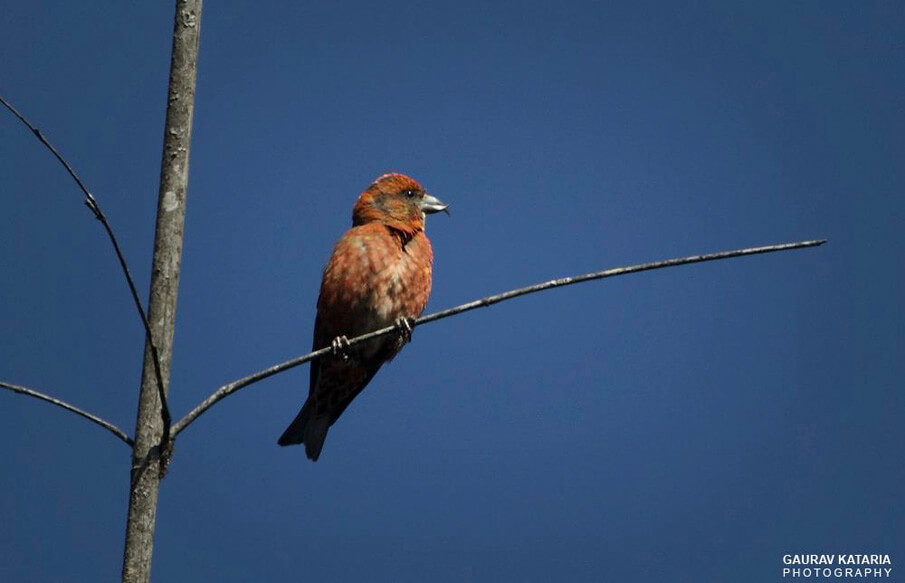Delhi – Corbett National Park
05 Days / 04 Nights
Birdwatching and tiger sighting go hand in hand on our Jim Corbett Short Birding Tours. Corbett National Park in Uttarakhand is the oldest national park of India and a protected area for the Bengal Tiger. Its location in the foothills of the Lesser Himalayas and its geography comprising hillocks, ravines, grasslands, deciduous forests More Info
Booked as per
request.
Included except arrival and departure city.

Private guide for complete tour.
Airport to Airport.
2-8PAX
Included
Birdwatching and tiger sighting go hand in hand on our Jim Corbett Short Birding Tours.
Corbett National Park in Uttarakhand is the oldest national park of India and a protected area for the Bengal Tiger. Its location in the foothills of the Lesser Himalayas and its geography comprising hillocks, ravines, grasslands, deciduous forests, marshes and riverine belts make it a biodiversity hotspot teeming with an incredible variety of wildlife and avifauna. As many as 580 species of birds have been spotted here and certain areas of the park (such as Durga Devi zone) are excellent birdwatching sites offering great views of hundreds of species.
Our Short Birding Tours of Corbett National Park targets these very hotspots and also covers the popular tiger trails to look for the striped predator. Multiple jeep safaris take us deep into the wilderness of Corbett and reveal to us a wonderful cast of birds including Ibisbill, Nepal Wren Babbler, Great Slaty Woodpecker, Great Hornbill, Pallas's Fish Eagle, Tawny Fish Owl, Spot-bellied Eagle Owl, Wallcreeper, Hodgson's Bushchat, White-tailed Rubythroat, Kalij Pheasant, Himalayan Vulture, Cinereous Vulture, Peregrine Falcon, Bar-winged Flycatcher-shrike, Crested Tree Swift, Black-hooded Oriole, and Collared Falconet.
Many of these avian stunners can be seen at the forest of Kumeria, located about 20 km from Corbett’s Tiger Camp. The banks of Kosi river at the park’s outskirts yield good views of Black Francolin, Common Quail, Jungle Bush Quail, Rock Bush Quail, Red Junglefowl, Greylag Goose, Bar-headed Goose, Comb Duck, Cotton Pygmy-goose, Eurasian Wigeon, Mallard, Northern Pintail, Common Teal, Red-crested Pochard, Ferruginous Pochard, Tufted Duck, Small Buttonquail, and Barred Buttonquail.
Birding walks inside Corbett National Park are limited to only a few selected parts, yet one may spot a great variety of kingfishers, woodpeckers, thrushes, flycatchers, shrikes, and forktails. Particularly enchanting is the variety of raptors one sees in the sky or on high branches. The prized sightings are of Black Baza, Oriental Honey-Buzzard, Lesser Fish Eagle, Grey-headed Fish Eagle, Egyptian Vulture, White-rumped Vulture, Slender-billed Vulture, Himalayan Griffon, Red-headed Vulture, Short-toed Snake Eagle, Eurasian Marsh Harrier, Pied Harrier, Hen Harrier, Crested Goshawk, Shikra, Besra, Eurasian Sparrowhawk, Northern Goshawk, White-eyed Buzzard, Long-legged Buzzard, Black Eagle, Greater Spotted Eagle, Steppe Eagle, Imperial Eagle, Booted Eagle, Rufous-bellied Eagle, Changeable Hawk Eagle, and Mountain Hawk Eagle.
Our five-day Corbett birding tour is designed for the birder who likes a bit of wildlife adventure on the side. The bird count easily runs into hundreds, and some of the sightings are so rare and special as to be worth the price of the entire Corbett birding trip.
Lodging: Corbett National Park has been a huge tourist attraction for decades now. Birders, wildlife and adventure lovers visiting the park have a whole range of accommodations to choose from. There are luxury and deluxe resorts for the well-heeled, and there are forest lodges and economy hotels for those on a budget. We choose for you a resort that offers quality service without burning in hole in your pocket. We’re also mindful of the resort’s location and prefer the ones that are close to the park and far from the crowds.
Meals: You would have to forgo little in your eating habits while birdwatching in Corbett National Park. There’s ample variety of Indian and Western dishes on the menu of the resorts here. Both vegetarian and meat-based delicacies are served. Taste and hygiene are not compromised with. Breakfast and dinner are usually taken at the resort, while lunch is mostly in the field during short breaks in the day’s birding.
Tour Difficulty: Most of the birding in Corbett is done on wildlife safaris – one in the morning and another in the afternoon. These excursions are comfortable. On the occasions when we do birding walks, the trails can wind through hilly terrain, or run along marshy depressions and riverine belts. You should be fit enough to put in the physical effort while carrying your personal birding equipment.
Tour Extension: If the five days of our Corbett short birding trip seem few to you, there are tour extensions to elongate your birding adventure of North India. A trip to Pangot – the pheasant capital of India – is a good top-up. Likewise, we can add a tour of Sat Tal, where you get to see aquatic birds at the seven lakes. The culture buffs will be pleased to visit the Taj Mahal. Whatever tour extension you wish for, just let us know well in advance.
Climate: The best time to do our birding trip of Corbett National Park is the winter season from October to February. The weather is pleasant during this time of year and the birds are out in large numbers. The days are agreeably cold and the nights are chilly, but the temperature rarely goes below 5 degrees Celsius. Do carry appropriate clothing for this weather. Also bring along a raincoat for an odd shower or two.
Getting There: Jim Corbett National Park is situated 230 km from Delhi. So, getting there should not be a problem. Guests from abroad can fly into Delhi and our representative will receive them at the airport and drive them to Corbett. Guests from India can arrive in Delhi by air, road or train and we will take over from there. The ride from Delhi to Corbett National Park lasts around 6 hours.
The Short Birding Tours of Corbett National Park takes off in Delhi. Our representative meets you at Delhi airport, railway station or any other location of your choice and then drives you to the Corbett National Park in the mountainous state of Uttarakhand. The cab ride takes about 6 hours and we arrive at Corbett in the afternoon. We check into a pre-booked resort, have our lunch, and then head out for a birding tour around Corbett National Park.
We visit a place called Garjiya Devi Temple on the outskirts of the park. The temple is built on a huge rock in the middle of the Kosi river, and we can visit it if you wish. The main reason for this excursion is to look out for some North India birds that frequent the woods and river bank. Our targets include Crested Kingfisher, Pied Kingfisher, Common Kingfisher, White-throated Kingfisher, Pallas’s Fish Eagle, Lesser Fish Eagle, Grey Wagtail, White-Browed Wagtail, White Wagtail, Spotted Forktail, River Lapwing, Red-wattled Lapwing, Brown-headed Barbet, Lineated Barbet, Slaty-blue Flycatcher, Greater Goldenback (Flameback), Plain Martin and Wallkeeper, among many others.
After this half-day Corbett birding expedition, we return to the resort for dinner and overnight.
Jim Corbett National Park is among the most prominent national parks of India. Tens of thousands of wildlife lovers, photographers, birdwatchers, and vacationers visit Corbett every year to admire its unique biodiversity.
Located in the foothills of the Himalayas, Corbett has a varying geography consisting of dense deciduous forest, grasslands, riverine belts, and a large lake. The Bengal Tiger is its chief attraction and it is on our wishlist during the two wildlife safaris of Corbett National Park: one in the morning and another in the afternoon. On both occasions, we look for avian specialties including Black Francolin, Common Quail, Jungle Bush Quail, Rock Bush Quail, Red Junglefowl, Kalij Pheasant, Greylag Goose, Bar-headed Goose, Comb Duck, Cotton Pygmy-goose, Eurasian Wigeon, Mallard, Northern Pintail, Common Teal, Red-crested Pochard, Ferruginous Pochard, Tufted Duck, Small Buttonquail, Barred Buttonquail, Eurasian Wryneck, Speckled Piculet, Brown-capped Pygmy Woodpecker, Grey-capped Pygmy Woodpecker, Brown-fronted Woodpecker, Fulvous-breasted Woodpecker, Rufous Woodpecker, Streak-throated Woodpecker, Scaly-bellied Woodpecker, Grey-headed Woodpecker, Black-rumped Flameback, White-naped Woodpecker, Great Slaty Woodpecker, Great Barbet, Blue-throated Barbet, Coppersmith Barbet, Indian Grey Hornbill, Great Hornbill, Oriental Pied Hornbill, Dollarbird, Stork-billed Kingfisher, Blue-bearded Bee-eater, Blue-tailed Bee-eater, Pied Cuckoo, Large Hawk Cuckoo, Indian Cuckoo, Oriental Cuckoo, Banded Bay Cuckoo, Grey-bellied Cuckoo, Green-billed Malkoha, and Sirkeer Malkoha.
In the evening, we return to our Corbett resort for dinner and overnight.
Around 500 species of birds have been observed in Corbett and they include a stunning cast of raptors, owls and nightjars. A whole day of birdwatching in Corbett can be devoted to these winged wonders.
The most prominent of these fierce predators includes the likes of Black Baza, Oriental Honey-Buzzard, Lesser Fish Eagle, Grey-headed Fish Eagle, Egyptian Vulture, White-rumped Vulture, Slender-billed Vulture, Himalayan Griffon, Red-headed Vulture, Short-toed Snake Eagle, Eurasian Marsh Harrier, Pied Harrier, Hen Harrier, Crested Goshawk, Shikra, Besra, Eurasian Sparrowhawk, Northern Goshawk, White-eyed Buzzard, Long-legged Buzzard, Black Eagle, Greater Spotted Eagle, Tawny Eagle, Steppe Eagle, Imperial Eagle, Booted Eagle, Rufous-bellied Eagle, Changeable Hawk Eagle, Mountain Hawk Eagle, Collared Falconet, Oriental Hobby, Indian Pitta, Hooded Pitta, Lesser Coucal, Crested Treeswift, Barn Owl, Oriental Scops Owl, Collared Scops Owl, Spot-bellied Eagle Owl, Brown Fish Owl, Tawny Fish Owl, Brown Hawk Owl, Grey Nightjar, Large-tailed Nightjar, Indian Nightjar, Savanna Nightjar, and Osprey.
In the evening, we return to our Corbett resort for dinner and overnight.
Each successive day of birdwatching in Corbett National Park has us exploring different regions of the tiger reserve. While a glimpse or two of the striped cat is all but guaranteed, we also get to see several gorgeous kingfishers, thrushes, flycatchers, shrikes, and forktails.
The checklist includes beauties such as Long-tailed Broadbill, Golden-fronted Leafbird, Orange-bellied Leafbird, Maroon Oriole, Black-winged Cuckooshrike, Black-headed Cuckooshrike, Bar-winged Flycatcher-Shrike, Yellow-bellied Fantail, Black-naped Monarch, Asian Paradise-flycatcher, Brown Dipper, Blue-capped Rock Thrush, Blue Rock Thrush, Orange-headed Thrush, Long-tailed Thrush, Scaly Thrush, Tickell's Thrush, Asian Brown Flycatcher, Rusty-tailed Flycatcher, Slaty-backed Flycatcher, Red-throated Flycatcher, Red-breasted Flycatcher, Slaty Blue Flycatcher, Small Niltava, Rufous-bellied Niltava, Tickell's Blue Flycatcher, Siberian Rubythroat, White-tailed Rubythroat, Orange-flanked Bush Robin, Golden Bush Robin, White-rumped Shama, Little Forktail, Black-backed Forktail, Slaty-backed Forktail, Spotted Forktail and several others.
In the evening, we return to the resort for dinner and overnight.
After an early breakfast we pack up and hit the road to Delhi. The cab ride takes 6 hours and we arrive around noon to drop you at the Delhi airport, railway station or any other location of your choice. The Jim Corbett Short Birding Trip comes to an end.


